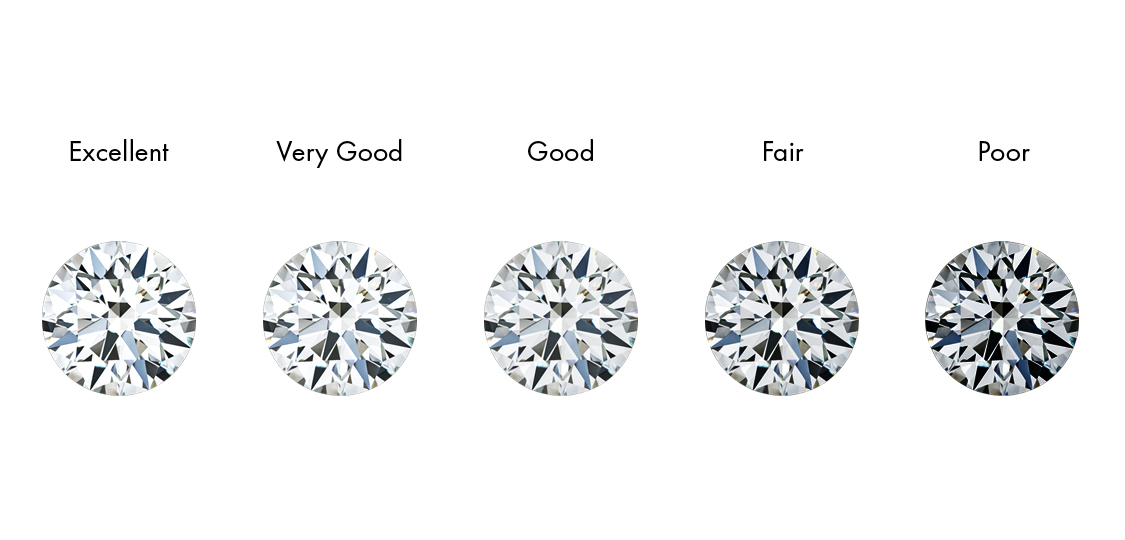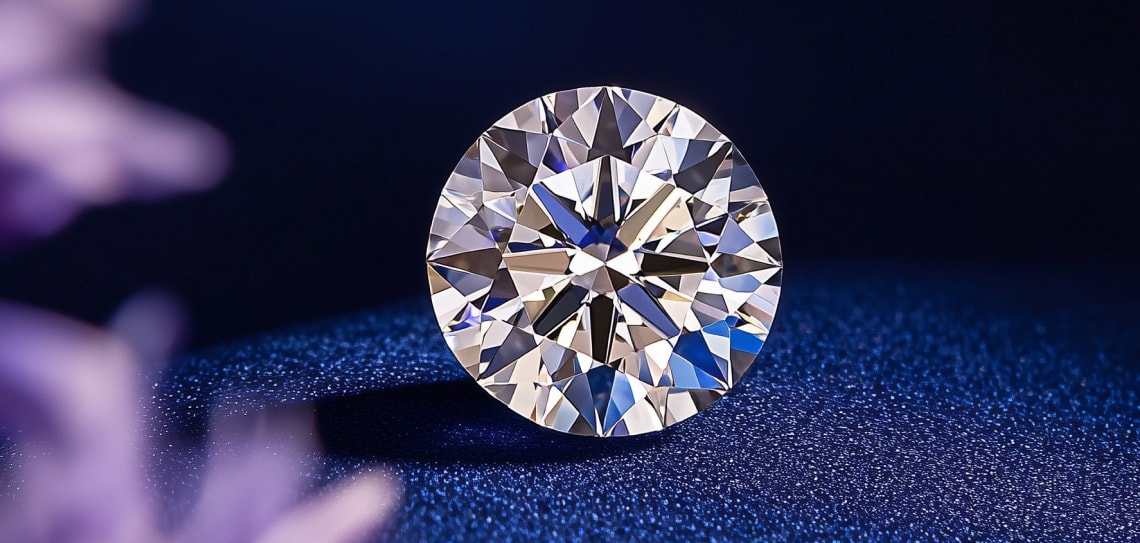Introduction
When it comes to evaluating a round brilliant diamond, the crown angle is one of the most critical yet often overlooked components that directly influence the gem’s overall brilliance, fire, and scintillation. Whether you’re a first-time buyer or an experienced gem enthusiast, understanding the best crown angle for round diamonds is essential for making a wise and informed purchase.
In this comprehensive 2025 guide, we will explore what the crown angle is, how it affects light performance, what the ideal crown angle range is, and how it works in tandem with other proportions such as pavilion angle, table size, and depth percentage. We’ll also discuss the differences between various diamond certifications, how jewelers evaluate crown angle, and why even a slight deviation from the ideal can significantly impact a diamond’s beauty and value.
Chapter 1: What is the Crown Angle in a Diamond?
The crown angle is the angle formed between the girdle (the widest part of the diamond) and the bezel facets (the flat surfaces on the crown). It directly impacts how light enters the diamond and how that light is refracted and reflected.
-
Measured in degrees, crown angle plays a crucial role in determining a diamond’s fire—how the stone disperses light into rainbow colors.
-
It is different from crown height, which is a percentage measurement indicating how tall the crown is in relation to the total depth.
Think of the crown angle as the slope of the “shoulder” of the diamond—too steep, and the diamond may lose brightness; too shallow, and it may lack fire.
Chapter 2: Why Crown Angle Matters
The crown angle contributes to the three key aspects of a diamond’s light performance:
-
Brilliance – The white light reflected from the diamond.
-
Fire – The dispersion of white light into colors.
-
Scintillation – The sparkle caused by movement.
An ideal crown angle helps balance these three traits. If the angle is too steep or too shallow, it can cause undesirable light leakage, which makes the diamond look dull or dark in areas.
Moreover, the crown angle also influences how the diamond appears from above, affecting the face-up appearance, which is a critical factor for consumers.
Chapter 3: Ideal Crown Angle Range for Round Brilliant Diamonds
The Gemological Institute of America (GIA) does not assign a single “perfect” crown angle but recommends an optimal range. Through decades of research, experts agree that the ideal crown angle for a round brilliant diamond lies between:
33.5° to 35.0°
-
33.5° – 34.0°: More brilliance (white light return), slightly less fire.
-
34.0° – 34.9°: Balanced brilliance and fire.
-
35.0° and above: Increased fire but reduced brilliance if not paired well with pavilion angle.
For most buyers, a 34.5° crown angle is considered a sweet spot, especially when paired with a complementary pavilion angle.
Chapter 4: The Interplay Between Crown Angle and Pavilion Angle
It is important to note that the crown angle does not operate in isolation. It must work in harmony with the pavilion angle, which is the angle of the facets on the lower half of the diamond.
-
Pavilion Angle Ideal Range: 40.6° – 41.0°
-
A common ideal combination:
Crown Angle = 34.5°, Pavilion Angle = 40.8°
This pairing creates excellent light performance, enhancing both brilliance and fire. When the angles are mismatched—say, a steep crown with a shallow pavilion—it can result in light leakage, a dull appearance, or a dark center.
Chapter 5: Other Factors That Interact with Crown Angle
1. Table Size
-
Ideal Table Size: 54% – 57%
-
A larger table may make the crown angle seem flatter.
-
A smaller table complements a slightly steeper crown angle by enhancing fire.
2. Crown Height
-
Ideal Crown Height: 14% – 16%
-
A shallow crown angle generally comes with a lower crown height and may impact the overall fire of the diamond.
3. Girdle Thickness
-
Too thick a girdle may offset the appearance of the crown angle.
-
Too thin a girdle could risk chipping, especially if paired with steep angles.
Chapter 6: Real-World Impact on Diamond Appearance
Let’s compare how crown angle affects two round brilliant diamonds with similar carat weights but different crown angles.
| Crown Angle | Pavilion Angle | Table % | Observed Effect |
|---|---|---|---|
| 33.0° | 40.6° | 58% | Bright but lacks fire |
| 34.5° | 40.8° | 56% | Balanced brilliance and fire |
| 35.5° | 41.2° | 54% | Fiery but some light leakage |
Even though all three diamonds may be graded as “Excellent” by GIA, the one with the 34.5° crown angle and 40.8° pavilion angle would appear more balanced and lively to the human eye.
Chapter 7: GIA, AGS, and Other Certification Standards
While GIA provides general parameters and does not specify a single ideal crown angle, other institutions like the American Gem Society (AGS) are more precise. AGS uses a numeric light performance model that assigns a grade from 0 (Ideal) to 10 (Poor).
-
AGS Ideal Crown Angle: ~34.3°–34.8°
-
GIA Excellent Range: 33.0°–35.5°
That means a diamond could technically have a crown angle of 35.5° and still receive a GIA “Excellent” cut grade—but this does not always translate to real-world optical beauty.
Chapter 8: How Jewelers and Buyers Can Evaluate Crown Angle
1. Certificate Review
-
Always check the GIA or AGS certificate to find the crown angle listed under “Proportions.”
2. Use of Advanced Tools
-
Professional jewelers use software like ASET, Ideal-Scope, and Hearts and Arrows viewers to observe the impact of angles on light behavior.
3. Visual Comparison
-
Compare multiple diamonds under the same lighting conditions. Subtle differences in crown angle can become apparent when placed side-by-side.
Chapter 9: Common Misconceptions About Crown Angle
1. “Bigger Crown Angle Means Better Sparkle”
-
Not always true. Overly steep crown angles can lead to poor brilliance.
2. “All GIA Excellent Cuts Have Ideal Crown Angles”
-
GIA’s Excellent cut grade covers a wide range of angles, including combinations that are less than ideal.
3. “Only Crown Angle Matters”
-
Crown angle is vital but must be evaluated in context with pavilion angle, table %, and symmetry.
Chapter 10: Best Crown Angle for Different Buyer Preferences
-
For Maximum Brilliance:
Choose 33.5°–34.0° crown angle with pavilion angle around 40.6°. -
For Maximum Fire:
Choose 34.8°–35.0° crown angle with smaller table (53%–55%). -
For Balanced Look:
Aim for 34.3°–34.6° crown angle paired with 40.7°–40.9° pavilion.
Chapter 1 1: The Role of Crown Angle in Fancy Diamond Settings
1: The Role of Crown Angle in Fancy Diamond Settings
In some intricate settings like halo, vintage, or bezel, the crown angle may impact how the light escapes and how the diamond interacts with the surrounding metal or stones. A well-proportioned crown angle ensures:
-
Less obstruction from prongs
-
Better sparkle under limited lighting
-
Enhanced “face-up” size perception
Chapter 12: Summary and Recommendations
In summary, the crown angle is not just a number—it is one of the key determinants of how a round diamond performs optically. Here’s what you should remember:
-
The ideal crown angle for round diamonds is between 34.0° and 35.0°.
-
The most universally preferred crown angle is 34.5°, especially when paired with a 40.8° pavilion angle.
-
Crown angle must be considered in combination with other parameters such as table %, depth %, and symmetry.
-
A diamond’s real-life sparkle cannot be determined by crown angle alone—use tools and visual comparisons to assess beauty.
Final Thoughts
As diamond buying continues to evolve in 2025 with more emphasis on light performance, ethical sourcing, and precision engineering, understanding the best crown angle for round diamonds gives buyers a competitive edge. Armed with the right knowledge, you can confidently choose a stone that isn’t just theoretically perfect—but one that visually stuns with every sparkle.
When shopping for the perfect round diamond, always look beyond the carat weight and color. Pay attention to cut quality, and especially the crown angle—because brilliance, fire, and value often lie in the details.

